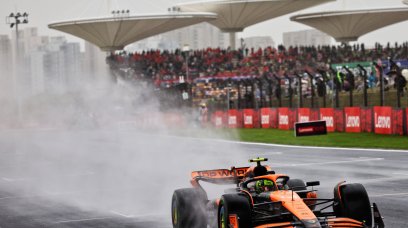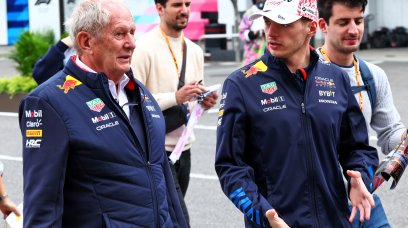According to the intention of the Brackley team engineers, the 'zero sidepod' concept of the Mercedes W13 is what the team believed to be the best setup to annihilate its rivals. In reality, this extreme concept constituted its main weakness, which from the beginning of the season made it a car with an almost impossible balance. From the beginning, the accentuated porpoising emerged as the most acute problem, which prevented the correct exploitation of their aerodynamic concept, which relied on a minimum ride height setting. The large, cantilevered area of the floor, with respect to the lower edge of the sidepods, determined the deformation of the lower profile, resulting in a reduced load generated by the Venturi channels. In parallel, the same initial solution to porpoising had been to adopt higher ride heights than the optimal ones, further amplifying how insufficient the generated downforce load was. Along with this, it is correct to underline that the problems of the W13 were not only at the aerodynamic level. The geometry of the suspension has repeatedly seemed unable not only to dampen the hopping induced by porpoising, but also unable to guarantee directionality and traction to the W13.
The lack of balance in several races was a main factor for a rapid degradation of the tyres, particularly the rear ones. Several interventions concentrated on the floor of the car, both in favour of its stiffening and the management of peripheral flows at the lateral edge, with the aim of generating a more effective pneumatic seal that would prevent sudden changes in the pressure centre under the car. All these interventions have gradually made it possible to improve the behaviour and predictability of the W13, not so much translating into a substantial and constant improvement in qualifying, but in terms of race pace. These improvements, however, led to considerations on the possibility of maintaining, albeit deeply evolved, the microscopic sidepods approach, compared to the much more competitive ones of Red Bull and Ferrari. The debate on which path to follow, to date, has not yet been resolved. In fact, the continual development (at least until the summer break) of the current configuration of the W13, whilst producing benefits, has reduced the analysis time to evaluate the other settings. This is a fundamental time to be able to fully understand, albeit only relying on simulation data, how the concepts of the most competitive rival cars work. The main issue with this could be, without in-depth analysis, to end up with a deeply underdeveloped car at the start of next season.
In practice, the team from Brackley are trying to make up for lost ground in understanding alternative concepts to 'zero' sidepods. Simply changing design concept to a Red Bull/Ferrari design would grant an advantage to those teams who have already progressed them. Therefore, the possibility of departing from the current configuration without sidepods does exist, but it could go through its development towards a less extreme configuration, without fully embracing the ideas of rivals. It would therefore be a question of defining which pieces of the puzzle to replace, so as not to have to start completely from scratch. It is also a continuation of the philosophy followed up to now with the W13. We mean that it was a very specific choice not to take an immediate step back towards the car's launch configuration, considering it in any case less competitive at a potential level, based on what emerged in the simulations. Within the Brackley project office, two teams seem to have been created to follow two different development paths. One based on a reasoned, albeit drastic, evolution of the current car, the second would be a reinterpretation of the Red Bull concept, also related to suspension design. The time to choose which direction to take is now running out, although Toto Wolff has actually allowed time until the end of the season to draw conclusions. One irrefutable fact remains: the stubborn determination not to want to remain an outsider next year, simply by copying from the best of this season. The doubt, however, is that perhaps too much time has been already lost ... we'll see.
Most read





















